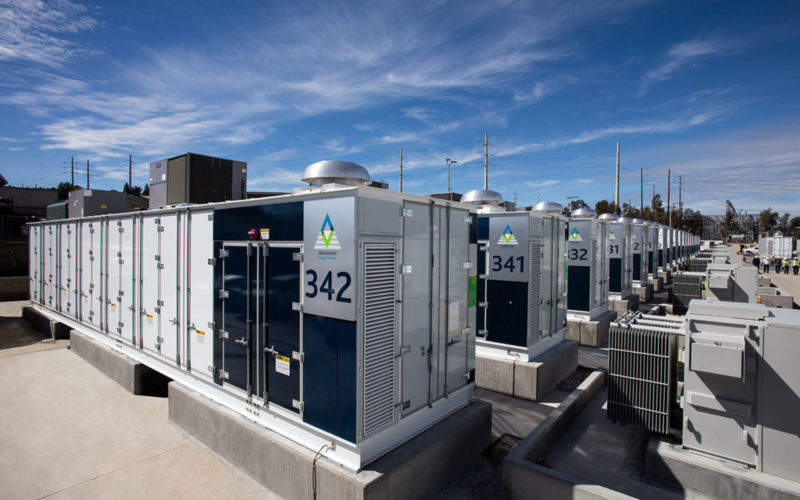
As global power demand grows, so does the necessity to find sustainable alternatives to traditional battery storage systems – not only to extend smartphone and laptop life but also to power electric vehicles (EVs) and store energy from wind and solar sources.
Lithium-ion (Li-ion) batteries have long been the favourite power source for modern technologies, overtaking lead-acid batteries due to their longevity and energy density. However, lithium’s rising costs – going up by 240% in 2017 according to the Financial Times – in addition to fears over supply chain, resource depletion and reports of sudden battery drains, have caused developers to look elsewhere for effective, low-carbon battery bases.
So far, the search has uncovered a range of materials with potential to solve the energy storage problem, including sodium, cobalt, water and gold. But with lithium now a staple of modern technology, will other materials ever reach the same level of commercial-scale success?
Ammonia boosts efficiency
Most recently, German industrial firm Siemens announced the launch of a £1.5m pilot project trialling the use of ammonia as a new form of energy storage. Traditionally used as a fertiliser, Siemens has voiced its belief that the ammonia project may have an advantage over other energy storage methods due to its repurposing of pre-existing technologies and hardware.
The project will take place at a proof-of-concept facility in Harwell, Oxfordshire, UK where the team will attempt to turn electricity, water and air into ammonia without releasing carbon emissions. The ammonia produced will then be stored in a tank, to be burned to generate electricity, sold as fuel for vehicles, or used for industrial purposes such as refrigeration.
In the instance of ammonia powering electric vehicles (EVs), rather than use the chemical directly, the scheme will extract the hydrogen only for use hydrogen vehicles.
The main benefit, Siemens claims, is cost-effectiveness, as is the case for many alternatives to lithium. Indeed, for many the aim is to simply find a cheaper battery that can provide the same storage capacity and longevity.
Sodium-ion batteries
Sodium-ion (Na-ion) batteries are being investigated by researchers from a number of institutions, as sodium is naturally abundant so has less resource risk than lithium and can be obtained at a lower cost.
The National Center for Scientific Research in France, Washington State University and Stanford University in the US are all developing sodium-based energy storage products, with the latter saying they can create a Na-ion battery that’s 80% cheaper than lithium versions. In each case, the standard internal components of a Li-ion battery are simply replaced with sodium counterparts.
A problem encountered with Na-ion is that it is around three times heavier than Li-ion, making the movement between battery electrodes more difficult. The reduced energy density makes it less effective for applications in the transport industry, although it would not prove problematic in sectors involving stationary energy storage. Needless to say, while progress has been impressive thus far, further research is still needed to perfect sodium energy storage units with better stability and higher energy density.
Liquid air energy storage
The development of ‘liquid air’ batteries has also offered itself as a viable alternative to traditional battery types. The world’s first full-scale liquid air plant was set up by Highview Power earlier this month in Greater Manchester, UK. The site is designed to turn air into liquid for energy storage purposes, a method that advocates claim is cheaper and longer-lasting than Li-ion products.
The scheme uses excess or off-peak electricity to cool ambient air to -196˚C, turning it into liquid and then storing it in metal tanks. Pumping and heating turns it back into a gas to be used to turn turbines.
Such a process is beneficial as it avoids the harmful emissions produced when gas is burned and it allows excess energy to be stored for later use at peak times. Though at the moment liquid air storage can only produce relatively small amounts of energy, firms such as Highview Power believe it can be scaled up to hundreds of megawatts.
A saline solution
Other firms have turned to water for energy storage. One example is Dutch company AquaBattery, which has developed a battery that relies on water and salt, with the combination flowing through a series of membranes used to store energy. The ‘Blue Battery’ design has the benefit of being entirely sustainable, as well as capable of storing the energy created for access at peak times.
A prototype of the battery has already been built, with a second version currently underway and a pilot project also under construction in The Green Village – a living innovation hub jointly created by Delft University of Technology and Stichting Green Village in Holland.
The use of non-toxic, sustainable materials sets AquaBattery apart from those based on chemical compounds. And while such batteries may be ‘greener’ than traditional lead-acid designs, the problem of how to dispose of them once their lives have run their course raises questions over just how sustainable they are. Indeed, some have warned that the rise in EVs may lead to a battery waste problem unless a viable disposal solution is found.
How green is green tech?
Although the EU has regulations for battery collection and disposal, this does not address Li-ion batteries. Flawed waste legislation and low collection rates mean Li-ion batteries often end up in landfill or incinerators, with Belgian technology company Umicore estimating that as little as 5% of Li-ion batteries on the market are collected for recycling.
Other metals contained in the batteries such as cobalt, aluminium and copper are recovered, while the lithium itself is usually discarded, being difficult to dispose of given its toxic, flammable and reactive nature.
As such, researchers turning their efforts to finding cheaper alternatives to the lithium batteries must also determine eco-friendly ways to dispose of them, lest we face further environmental damage from a new raft of harmful waste materials.



